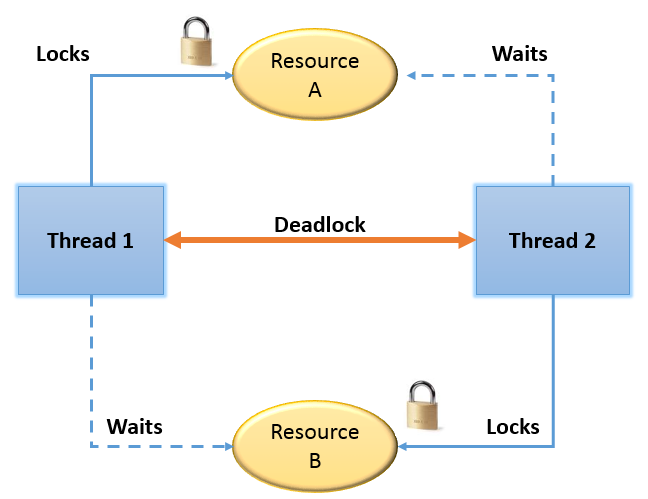

Its upto the process to release it accordingly.Ĥ. No Preemption: a process cannot be forced to release the resource at any particular point of time. Hold and Wait: a process at any time can request for another resource been hold by another process while already holding one resource with itself.ģ. These conditions are also considered while working on deadlock related to OS also.ġ Mutual Exclusion: at least one resource must be there that cannot be allocated to one process more than one time.Ģ. Deadlock Occurrence Conditions:Ĭoffman Condition: Deadlock can arise if following four conditions occurs together or simultaneously. the system maintain this wait-for graph for every transaction waiting for the resource. When T2 release the resource R then this edge will be dropped or cancelled and T1 will have the resource R. For example T1 requesting for the resource R which is held by another transaction T2 then a directed edge is created from T1 and T2. Here a node is created for every transaction entering the system. It is an easy and simple way to find if any deadlock situation occurs. This is easy and good to use but won’t work with bulky system rather are made for system with lighter and transactions and resource movements. One such mechanism is called Wait – for graph. Always terminating a transaction is not considered best approach to solve the problem of deadlock instead a deadlock avoidance mechanism can be employed to detect the deadlock situation before hand. For that we have resource scheduler and if any deadlock situation arises it would be known to resource scheduler.
#Deadlock database how to
Now here arises a question how to detect whether a deadlock occurred or not. Now P1 wants R2 resource to complete its process but P2 keep holding it whereas P2 wants R1 resource to complete itself thus both P1 and P2 keep waiting and all this will lead to a standstill situation in which no process will be able to complete itself and will be in wait state forever. Suppose we have two process P1 and P2 and two resources R1 and R2 and R1 is allocated to P1 and R2 is allocated to P2. To understand this phenomena more clearly we will take up the following example. but in different order.We’ll be covering the following topics in this tutorial:ĭeadlock is a situation which occurs in a multi-process system where there is a resource sharing environment and when one process keep on holding the resource for an indefinite period of time, which is been required by another process then this situation lead to a deadlock or halt in the system working. IF object_id('dbo.Deadlock') IS NOT NULL DROP TABLE dbo.Deadlock ĬREATE TABLE dbo.Deadlock(Id INT IDENTITY CONSTRAINT PK_CL_Deadlock PRIMARY KEY CLUSTERED,SomeValue INT DEFAULT 0, Data CHAR(6000) DEFAULT 'x') WHERE t.SomeValue = Single-index (Clustered) table, 2 rows - deadlocks after 2 seconds Single statement, will deadlock after about 5 seconds
#Deadlock database update
UPDATE t SET t.Data = GETDATE(), t.SomeValue = 1įROM dbo.Deadlock t WHERE t.SomeValue = 1 Single row, will deadlock after about 1 minute But that is a topic for a new blog post.Ĭreating a database and a table for the demo: Execution times are 4h, 4h, 8h, 4h, 4h, 8h, etc. Occasionally, insert takes 8h, because session is blocked by other session and waits 4h until first one is finished, although they are inserting different values for sure (enforced by app logic). Eg each insert command inserts 1 000 000 000 rows and normally takes 4h. For example, if you have a large transaction that insert rows in the table, and some other session does the same, it is likely they will occasionally block even they never insert the same row values. More rows locked, higher probability of collision. That happens with all hash functions, even with hashing function that is used by locking algorithm. That depends on execution plan, with which index will it access the table first.īy the way, hash values can “collide”, that is, for different input value give same output value. If one session first locks first hash then second hash, and the other session first locks second hash then first hash, it is possible to create a deadlock “circle” between them if we hit the right moment. And two locks are locked in order, not at the same time. Therefore, for the same row (row with Id=1), we have 2 indexes and X-locking 2 different hash values.


 0 kommentar(er)
0 kommentar(er)
